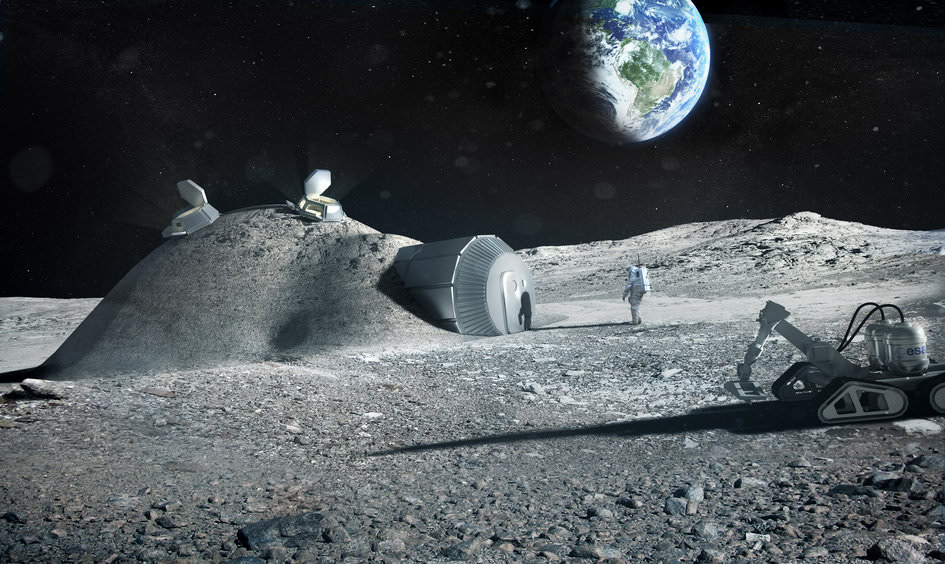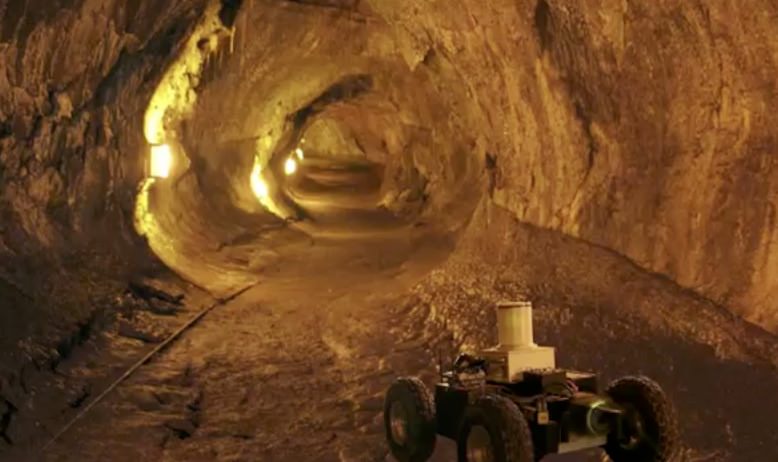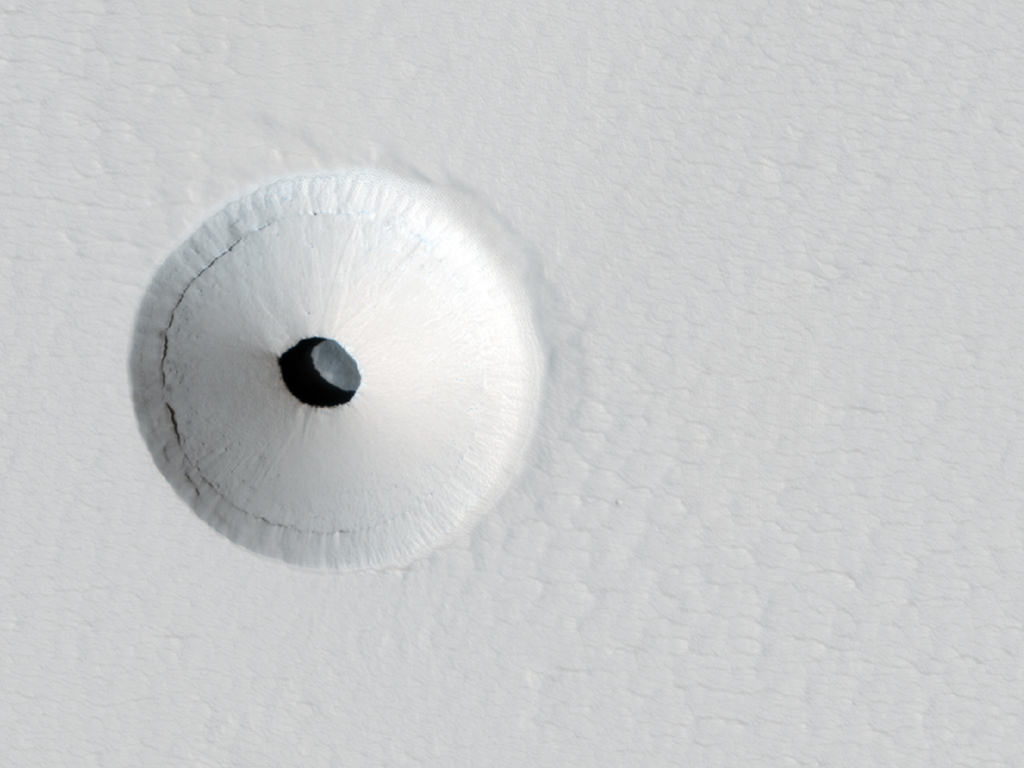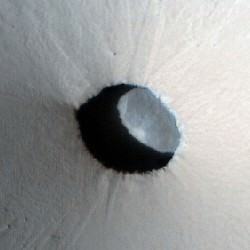Between NASA, the Chinese National Space Agency, the European Space Agency and Roscosmos, there’s no shortage of plans for returning to the Moon and creating a permanent base there. Naturally, these plans have given rise to questions of where such bases should be built. So far, the top contenders have been lava tubes that have been spotted in various locations across the surface of the Moon and in the polar regions.
Whereas the polar regions are permanently shaded and appear to have abundant ice water, stable lava tubes would offer protection against the elements and harmful radiation. However, according to a new discovery presented at NASA’s Lunar Science for Landed Missions Workshop, it appears that there is a location on the Moon that ticks off both boxes – a possible lava tube that is located in the norther polar region!
This discovery was detailed in an abstract titled “Philolaus Crater: Exploring Candidate Lava Tubes And Skylights Near The Lunar North Pole“. The author was Pascal Lee, the co-founder and chairman of the Mars Institute, a planetary scientist at the SETI Institute, and the Principal Investigator of the Haughton-Mars Project (HMP) at NASA’s Ames Research Center.
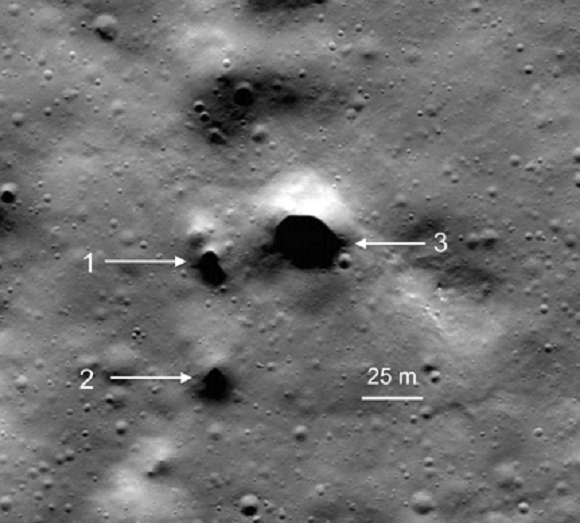
These pits were identified based on an analysis of imaging data from NASA’s Lunar Reconnaissance Orbiter (LRO). These images indicated the presence of small pits in the northeastern floor of the Philolaus Crater, a 70 km (43 mi)-diameter impact crater located about 550 km (340 mi) from the Moon’s North Pole. These pits could potentially be “skylights”, holes in the surface that lead to subterranean recesses.
Each pit appears to be a rimless depression measuring roughly 15 to 30 meters (50 to 11 ft) across and have shadowed interiors. Moreover, the pits are located along winding channels known as “sinous rilles” that are present along the floor of the Philolaus Crater. On the moon, these channels are thought to be the result of subterranean lava tubes that have since collapsed, or partially collapsed.
If water ice is present in the region, then these skylights could allow future explorers access to subsurface water ice that is less tainted by regolith. This presents a number of opportunities for research, and future long-term missions to the lunar surface. As Pascal Lee explained:
“The highest resolution images available for Philolaus Crater do not allow the pits to be identified as lava tube skylights with 100 percent certainty, but we are looking at good candidates considering simultaneously their size, shape, lighting conditions and geologic setting.”
In recent years, over 200 pits have been discovered by other researchers on the Moon, many of which were identified as possible skylights leading to underground lava tubes. However, this latest discovery is the first to place a possible skylight and lava tube within the Moon’s polar regions. These regions have become the focal point of research in recent years due to the fact that water ice is known to exist in the polar regions.
Within these permanently-shadowed cratered regions – particularly the South Pole-Aitken Basin – water ice is known to exist within the regolith. As a result, multiple proposals have been made to create lunar bases in the polar regions. However, there remains the challenge of how to get to that water (which would require drilling) and the fact that a permanently-shadowed region would not allow access to solar power.
This new discovery is therefore exciting for three reasons. For one, it would allow for much easier access to lunar polar ice that would be much more pure than anything drilled from the surface. Second, solar power would be available nearby, just outside each skylight. And third, these openings could provide access to a stable lava tube that contains water ice itself, much as lava tubes on Earth do.
Philolaus Crater also offers two additional bonuses when it comes a lunar settlement. Given that the crater formed in the Copernican Era (i.e. the last 1.1 billion years) it is relatively young as lunar craters go. As such, it would offer scientists with plenty of opportunities to study the Moon’s more recent geological history. Also, since the Philolaus Crater is on the near-side on the Moon, it would allow direct communications with Earth.
And as Lee added, a base in this location would also allow for some amazing views:
“We would also have a beautiful view of Earth. The Apollo landing sites were all near the Moon’s equator, such that the Earth was almost directly overhead for the astronauts. But from the Philolaus skylights, Earth would loom just over the crater’s mountainous rim, near the horizon to the southeast.”
Looking ahead, Lee and his colleagues indicate that further exploration is needed to verify whether or not these pits are lava tube skylights and whether or not they contain ice. In the future, astronauts and robots could be sent to the polar regions of the Moon in order to seek out and explore caves that have been identified from orbit. As Lee explained, this will have benefits that go far beyond lunar exploration.
“Exploring lava tubes on the Moon will also prepare us for the exploration of lava tubes on Mars,” he said. “There, we will face the prospect of expanding our search for life into the deeper underground of Mars where we might find environments that are warmer, wetter, and more sheltered than at the surface.”
And as Bill Diamond – president and CEO of the SETI Institute – explained, this discovery highlights the true nature of exploration, which goes well beyond orbiters and robotic explorers:
“This discovery is exciting and timely as we prepare to return to the Moon with humans. It also reminds us that our exploration of planetary worlds is not limited to their surface, and must extend into their mysterious interiors”.
The Lunar Science for Landed Missions Workshop was convened by the Solar System Exploration Research Virtual Institute (SSERVI) at NASA’s Ames Research Center. The purpose of the workshop was to examine the range of scientific investigations that could be conducted on the Moon, including in-situ science, network science and sample return missions.
Further Reading: SETI

